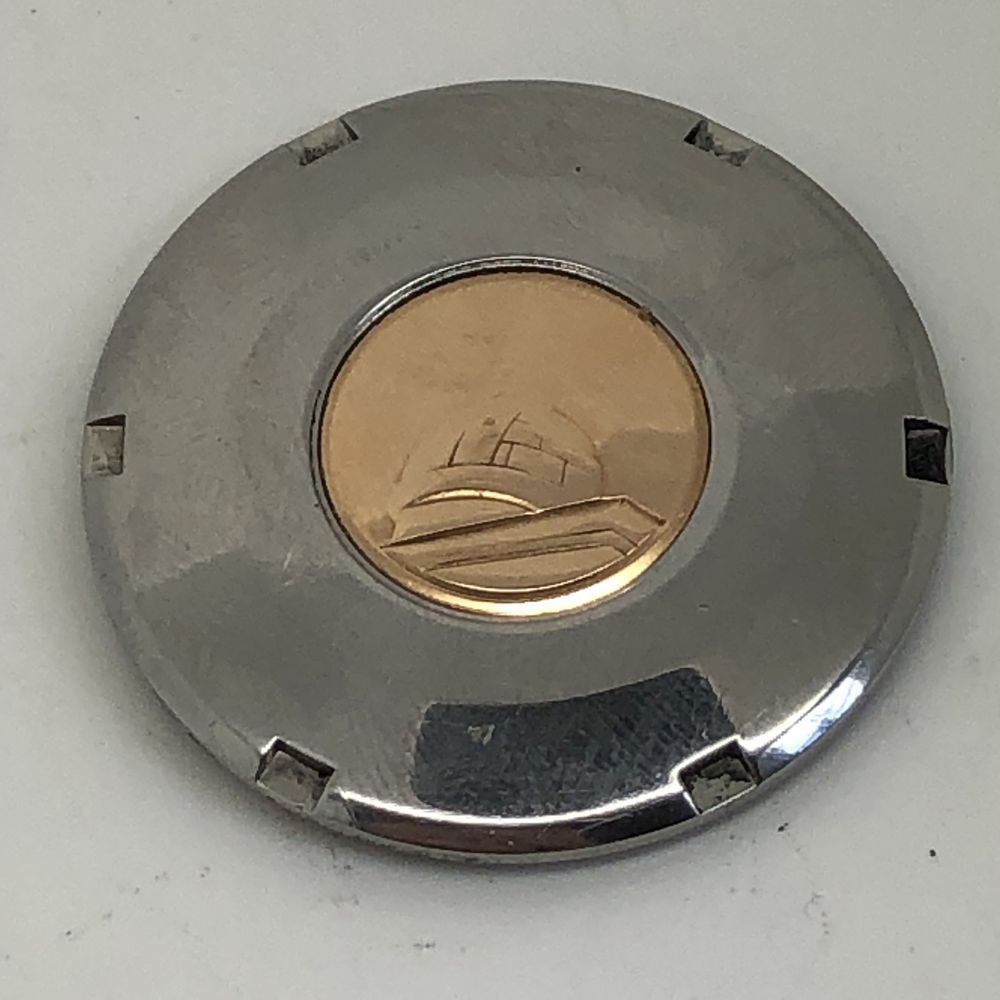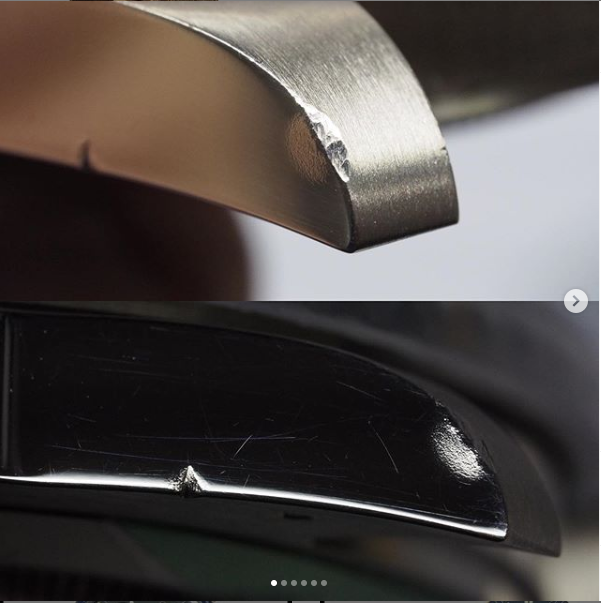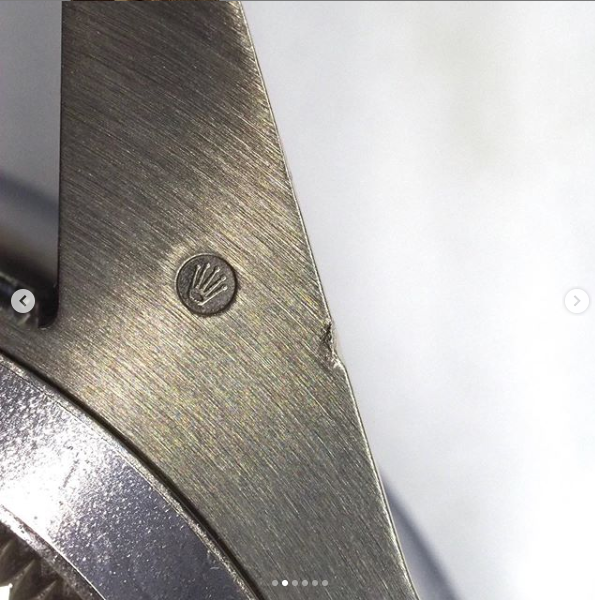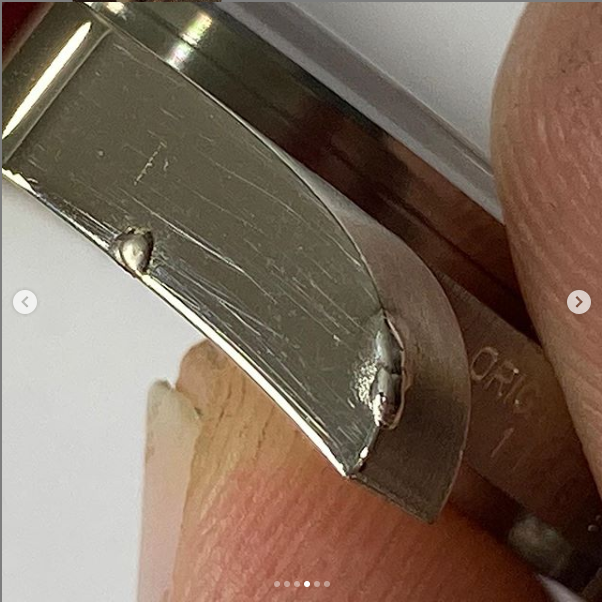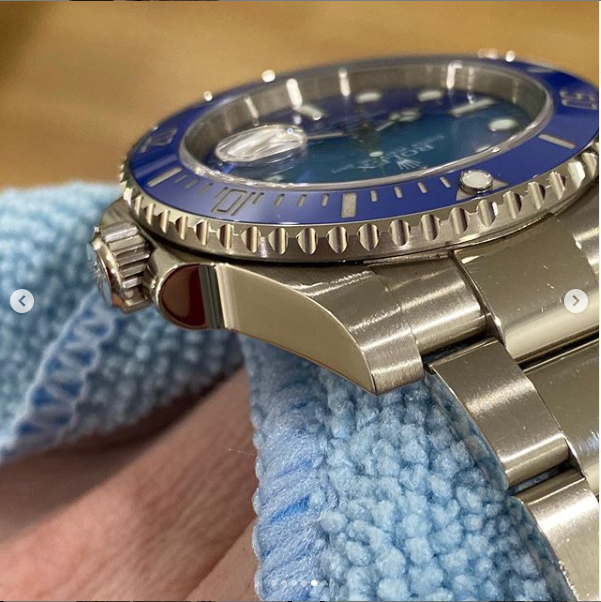"Repolished" What does it mean to you?
oinkitt
·Has it been polished? = I don't know what I'm looking at.
rob#1
·Why stop there? 😵💫 You may as well take the rest off and present it as the ‘rarely seen’ plain caseback.
Come to think of it, that looks like a hubcap off my old motor...
Come to think of it, that looks like a hubcap off my old motor...
wouter van wijk
·Had a really interesting discussion with a watch collector and also coin collector as well as a car collector. He told me that he sees watches shifting into the direction from coins were you have uncirculated variations and many gradations https://en.wikipedia.org/wiki/Coin_grading (even within these categories sub categories) . Atmo money must roll and you must flex your watches on the wrist and on the desk instead of lying in the safe. It used to be policy to polish these watches at a service. I tell my clients almost all serviced vintage watches are polished. If its not the case then they come out of a safe. You can only tell when its from first owners who can prove that with receipts etc. otherwise most of the time/quite often it are fairytales and made up BS stories by fellow dealers. When you visit a watch fair, every watch has been serviced. When I then pick my little timegrapher out of my pocket, the story all of the sudden kind of changes.
eugeneandresson
·I tell my clients almost all serviced vintage watches are polished. If its not the case then they come out of a safe. You can only tell when its from first owners who can prove that with receipts etc. otherwise most of the time/quite often it are fairytales and made up BS stories by fellow dealers.
I respectfully disagree. This sounds like lazyness 😉 (but agreed re the ‘fellow dealers BS stories’ bit...one should let ones own eyes and knowledge cut through the crap)
If one does ones homework and looks at enough untouched specimens (for watches in question that are well documented in pictures, or/and that one passes a lot through their hands), it is fairly easy to be able to tell with certainty the untouched cases from the touched cases. That includes surface finish (brushed/polished, transitions, sharpness of edges, brush grain size and direction etc etc etc). Manufacturers repeated the same process on thousands and thousands of cases thousands of times...repeating the same pattern.
Even with perfectly refinished/relazered vintage Rolex, there must be tells of tampering (ie too perfect, like the case spent its whole life in a safe, not often honest dings etc etc etc, but here I have not done my homework nor do I intend to). You most likely have to be a Rolex case refinisher to have this kind of knowledge.
Edited:
wouter van wijk
·I respectfully disagree. This sounds like lazyness 😉 (but agreed re the ‘fellow dealers BS stories’ bit...one should let ones own eyes and knowledge cut through the crap)
If one does ones homework and looks at enough untouched specimens (for watches in question that are well documented in pictures, or/and that one passes a lot through their hands), it is fairly easy to be able to tell with certainty the untouched cases from the touched cases. That includes surface finish (brushed/polished, transitions, sharpness of edges, brush grain size and direction etc etc etc). Manufacturers repeated the same process on thousands and thousands of cases thousands of times...repeating the same pattern.
Even with perfectly refinished/relazered vintage Rolex, there must be tells of tampering (ie too perfect, like the case spent its whole life in a safe, not often honest dings etc etc etc, but here I have not done my homework nor do I intend to). You most likely have to be a Rolex case refinisher to have this kind of knowledge.
I know and agree with your comments. The meaning of my comment is to continue on the topic raised by the OP. This whole polish unpolished thing gets out of control. There are a lot of people that dont know how to use a loupe let alone that they can tell what chamfers or bevels are and what are the different techniques of polishing.
But I also know what the best techniques are that are used to fool everyone to let a watch look like in used condition. My polisher does APRO refinishing and 99.999% cant spot the difference when they come out of the factory after he has refinished the case. With the blind eye you cant spot the difference when the thinner layers of a couple of microns are removed. We all agree its difficult to find a really good watchmaker whom we will trust or precious 321s; but finding a really good case refinisher, thats really hard.
Its not lazy. I just want to educate my clients that before they start asking these questions they really have to know where they are talking about. To me its all about honesty. I only declare it when I know. So when I have ordered to refinish a case I will tell. For the rest when people ask I say most of the time that a case is polished. It makes No sense to me to put a €3000 watch under the microscope. When a 2915 safe queen pops up it does.
Makes me think that I will ask my polisher again how he looks at this subject. I have discussed this with him before. But I want to double check how he assesses case condition on vintage pieces. He doesnt care if a case is vintage or pre-owned. He just wants it to look again like factory standard.
He told me a funny story though. His Teacher on the national watchmaking school asked hom how he did all that refinishing. He answered him politely that he refused to tell him his secrets.
eugeneandresson
·Its not lazy. I just want to educate my clients that before they start asking these questions they really have to know where they are talking about.
then you should help them with this ->
There are a lot of people that dont know how to use a loupe let alone that they can tell what chamfers or bevels are and what are the different techniques of polishing.
-> to the best of your abilities good Sir 👍
My polisher does APRO refinishing and 99.999% cant spot the difference when they come out of the factory after he has refinished the case.
Could you enlighten those of us (which includes myself) what 'APRO finishing' is please? A google search yields nothing on the topic of watches...and the beauty of such threads as this, is that a wealth of information can be unearthed by good natured discussion.
For the rest when people ask I say most of the time that a case is polished. It makes No sense to me to put a €3000 watch under the microscope.
For me (as an example) it does. That's no trivial sum of money for 95% of collectors.
Its not lazy.
I apologize if I offended...not my intention, just the initial way it was described sounded so.
He doesnt care if a case is vintage or pre-owned. He just wants it to look again like factory standard.
On some watch cases that is virtually impossible to mimic...on others, not so. And so the murky waters stay murky...
Here is a great example of great work done (on that brand whose cases are much easier to 'fix' than other cases), with full disclosure...
(due to being disclosed, I would say the brushing in the above pic, when compared to the one above it, is the tell...but if it wasn't disclosed, would be super super difficult to spot)
Again, to my point : if one has enough passion for a particular watch (and there are thousands), and spends enough time researching it, then it is most certainly possible to spot untouched cases from touched ones.
JwRosenthal
·I think the issue with the polished unpolished debate is not among long time collectors, but with new collectors. Those of us who have been collecting since before the modern watch craze all know that if a case has been carefully and lightly polished at some point in its life, it wouldn’t keep us from buying a watch in exceptional shape.
But I see threads (not as much on this forum as TrF ) where new collectors present a very nice example of a vintage watch and the collective immediately dismiss the value of the watch (both financially and esthetically) becuase it had been polished. Sometimes the bashing goes further to completely shit on a watch becuase it may have service hands or a service dial- it went for service- that happens, it doesn’t make the watch worthless, just not as collectible as a pristine example.
A watch that has truly never been polished probably represents under 5% of the vintage market. This singular pursuit of grail-like perfection is creating a new generation of collectors who are programmed with an unrealistic expectation of condition and perpetuating the myth that a watch is only collectible if it has never been polished. Frankly, a 50-60 year old watch that has never been polished implies it has never been serviced- and if it shows wear and wasn’t a safe queen, I shudder to think about what lurks inside.
But I see threads (not as much on this forum as TrF ) where new collectors present a very nice example of a vintage watch and the collective immediately dismiss the value of the watch (both financially and esthetically) becuase it had been polished. Sometimes the bashing goes further to completely shit on a watch becuase it may have service hands or a service dial- it went for service- that happens, it doesn’t make the watch worthless, just not as collectible as a pristine example.
A watch that has truly never been polished probably represents under 5% of the vintage market. This singular pursuit of grail-like perfection is creating a new generation of collectors who are programmed with an unrealistic expectation of condition and perpetuating the myth that a watch is only collectible if it has never been polished. Frankly, a 50-60 year old watch that has never been polished implies it has never been serviced- and if it shows wear and wasn’t a safe queen, I shudder to think about what lurks inside.
